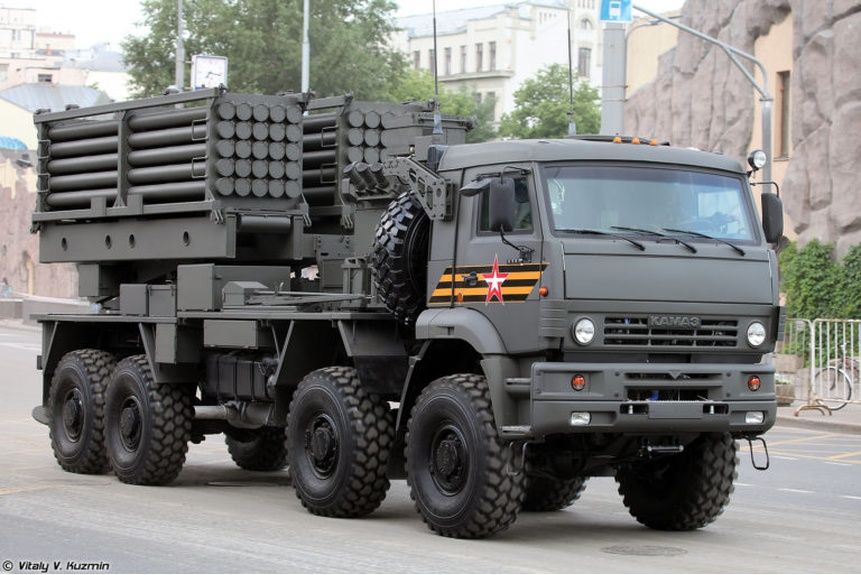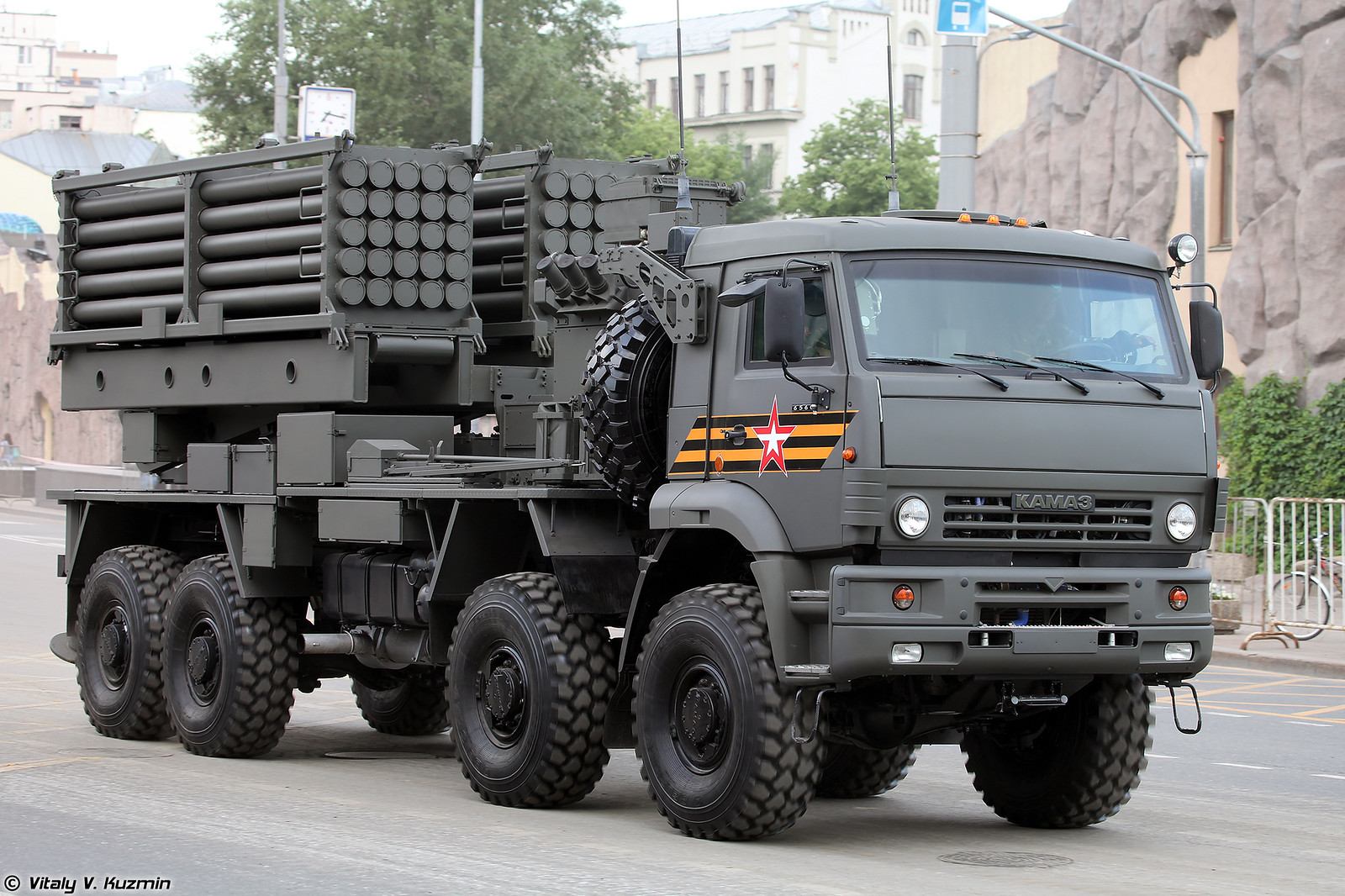
Russia Fields the “Zemledeliye” Engineering System for Remote Mining
By Dr Charles Bartles

Engineering System for Remote Mining (ISDM).
“The installation of minefields with the help of the “Zemledeliye” ISDM [Engineering System for Remote Mining] has a number of advantages. In particular, the speed of laying minefields has been increased, especially in hard-to-reach areas. And the ability of mines to deactivate or self-destruct at a given time ensures safe and quick clearance after the cessation of hostilities.”
“In maneuver war, they [Engineering Systems for Remote Mining] are very effective,” the expert explained. “They bind the enemy, by covering flanks and performing many other missions. On the southern axis, on the one hand, there is a high terrorist threat: Central Asia is nearby, and these systems will become an effective defense system. But if a situation arises related to the same Ukraine, then Zemledeliye can also be used against modern armies equipped with high-tech weapons…”
-Russian military expert Vladislav Shurygin
Russian Multiple Launch Rocket Systems (MLRSs)—such as the 120mm BM-21 Grad, 220mm BM-27 Uragan, and 300mm BM-30 Smerch—have rockets that can deploy scatterable mines considerable distances. Although Russian MLRSs can all employ these types of rockets, in practice they are typically only deployed by the BM-27 Uragan, whose 9M59 rocket can deploy 9 PTM-3 antitank mines, and BM-30 Smerch, whose 9M55K4 rocket can deploy 25 PTM-3 antitank mines. The BM-21 Grad, the only MLRS type at brigade/division level, is capable of firing the 9M22K2/9M28K scatterable mine rocket, but rarely does so because the 9M22K2/9M28K munition is only capable of deploying three PTM-3 antitank mines. Creating just a 1km minefield requires a minimum of 90 9M22K2/9M28K munitions. If the intent were to deter or slow a tank battalion, an entire battalion of BM-21s, 18 launchers, would be required.
The accompanying excerpted articles from Russian newspaper Izvestia and Russian defense-related weekly Voyenno-Promyshlennyy Kuryer discuss Russia’s recent fielding of the “Zemledeliye” Engineering System for Remote Mining (ISDM). The Zemledeliye ISDM is a dedicated system for deploying scatterable mines at a distance of up to 15km. The system consists of a launch vehicle with two pods of 25 rockets each, a transport-loading vehicle, and transport-launch containers with rockets equipped with various types of mines. The Voyenno-Promyshlennyy Kuryer article notes that the Zemledeliye ISDM will greatly increase the speed of mine laying, and that these mines have the capability to deactivate or self-destruct. According to the Izvestiya article, the military developed new tactics at the recent Zapad-2021 strategic exercises to take full advantage of Zemledeliye’s capabilities. These tactics consist of using the Zemledeliye in conjunction with a TOS-1A Solntsepek thermobaric rocket launcher to create a ‘fire field.’ Izvestiya also explains that the military is only fielding these systems in engineer brigades and engineer regiments.
Source:
Oleg Falichev, “«Земледелие» в полосе наступления: Инженерные войска ЦВО впервые получат новую уникальную систему дистанционного минирования (‘Zemledeliye’ in the offensive zone: Engineering Troops of the Central Military District will receive a new unique remote mining system for the first time),” Voyenno-Promyshlennyy Kuryer (weekly newspaper focusing on military and defense industry issues), 8 February 2022. https://vpk-news.ru/articles/65708
Of course, the engineering troops of the Central Military District do not forget about solving the main tasks of combat training. It is especially gratifying to note in this regard that the process of re-equipment with new equipment is actively underway. In particular, today the units are receiving the ISDM [Engineering System for Remote Mining] “Zemledeliye” remote mining system. For the first time, she will come to a separate engineering brigade of the Central Military District, stationed in Bashkiria.
…The installation of minefields with the help of the “Zemledeliye” ISDM has a number of advantages. In particular, the speed of laying minefields has been increased, especially in hard-to-reach areas. And the ability of mines to deactivate or self-destruct at a given time ensures safe and quick clearance after the cessation of hostilities.The engineering system includes a combat vehicle on a KamAZ cross-country chassis, a transport-loading vehicle and transport-launch containers with engineering ammunition equipped with mines of various types. All this is a serious factor in breaking through the fortified defenses of the enemy, making passages in minefields…
Source: Roman Krestul and Bogdan Stepova, “Курс «Земледелия»: юг России усилят «реактивными» минными полями: Боевые системы способны в кратчайшие сроки остановить продвижение любого противника (Course ‘Zemledeliye’: The south of Russia will be strengthened by ‘reactive’ minefields),” Izvestiya (large circulation Russian newspaper), 15 February 2022. https://iz.ru/1291330/roman-kretcul-bogdan-stepovoi/kurs-zemledeliia-iug-rossii-usiliat-reaktivnymi-minnymi-poliami
…All engineering units of the Southern MD will soon be equipped with Zemledeliye remote mining systems. This decision was made in the Ministry of Defense, sources in the military department told Izvestiya…The interlocutors of Izvestiya reported that in the future, Zemledeliye should be received by the engineer regiments of the 8th, 49th and 58th combined arms armies, which are part of the Southern MD. Separate batteries equipped with these systems will be formed in them.
Izvestiya has already written that in 2022 the Zemledeliye systems will also be received by the troops of the Central MD. The head of the engineer troops of the Central MD, Colonel Andrey Gandzyuk, said in January of this year that the ISDM would be received by a separate engineering brigade stationed in Bashkiriya by the end of this year.
The appearance of Zemledeliye in the Southern MD is more than relevant, because these systems will be used where ground operations are highly likely, military expert Vladislav Shurygin told Izvestiya. “In maneuver war, they are very effective,” the expert explained. “They bind the enemy, by covering flanks and performing many other missions. On the southern axis, on the one hand, there is a high terrorist threat: Central Asia is nearby, and these systems will become an effective defense system. But if a situation arises related to the same Ukraine, then Zemledeliye can also be used against modern armies equipped with high-tech weapons…
Zemledeliye was adopted by the Russian army quite recently. Tests of this engineering system were successfully completed as part of the Kavkaz-2020 exercise. Zemledeliye was involved in the run-through of the final episode at the Kapustin Yar training ground in the presence of President Vladimir Putin and top military leaders. The minefield set up by fighting vehicles delayed the advance of the mock enemy’s reserves and limited their maneuverability.
Now the tactics of using ISDM on the battlefield are being worked out. At the Zapad-2021 exercise, the joint use of Zemledeliye and mobile groups of heavy flamethrower [thermobaric] systems TOS-1A Solntsepek was tested. In particular, such an element of influencing the enemy as a “fire field” was tested. The Zemledeliye set up a minefield, and while the enemy was bogged down on it, the heavy flamethrowers struck them with thermobaric rockets. Then all the mines were remotely detonated. The result was a zone of total destruction, where all living things dying from fragments, or the high temperature and sudden drop of pressure.
Image Information:
Image: Engineering System for Remote Mining (ISDM)
Source: https://www.vitalykuzmin.net/Military/Dress-rehearsal-of-2020-Moscow-Victory-Day-Parade/i-2SVLP7k/A
Attribution: CC BY-NC-ND 4.0
Distribution A: Approved for public release
Categories:
Tags:
Related Products
Chinese Military Exercises Highlight Improvements in Joint Operations
North Korean Media Stays Quiet Despite Global Concerns






